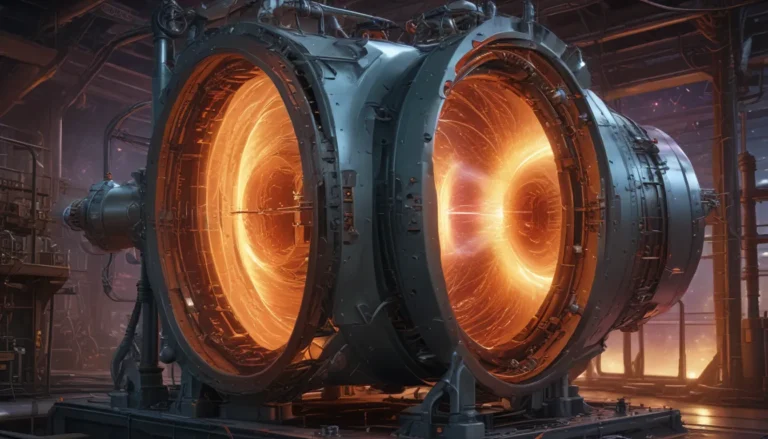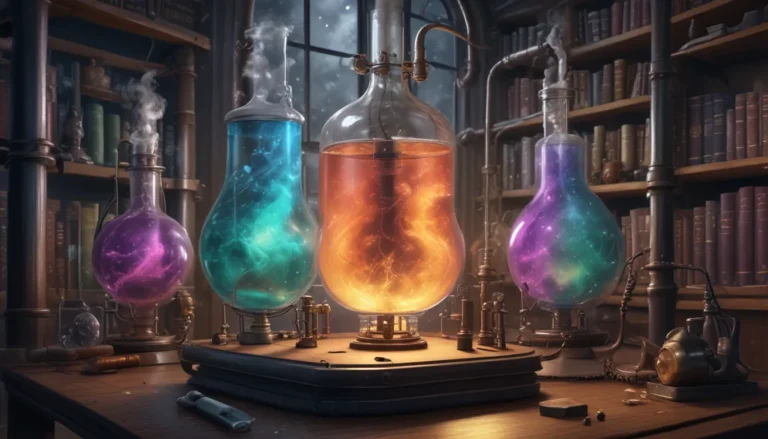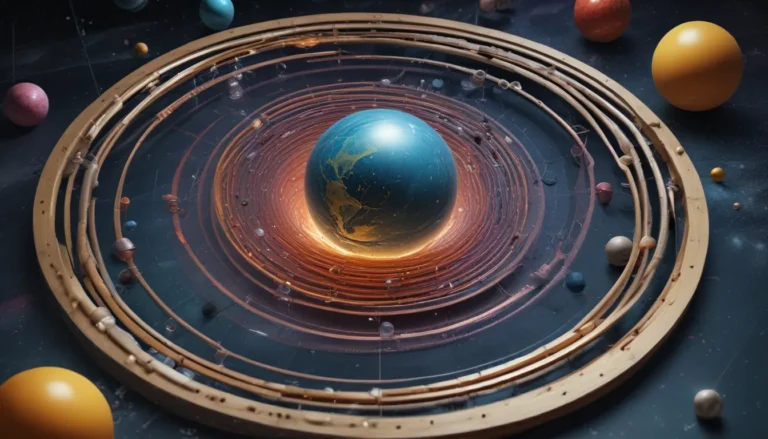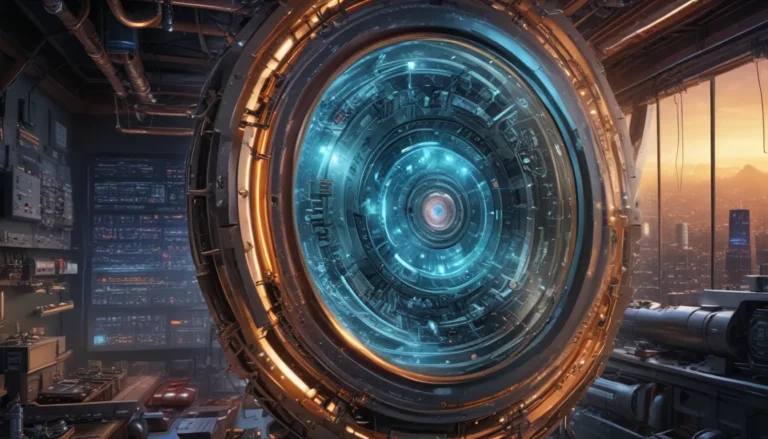A Note About Images: The images used in our articles are for illustration purposes only and may not exactly match the content. They are meant to engage readers, but the text should be relied upon for accurate information.
The study of physics opens the door to a world of fundamental laws and principles that govern the universe. Among these captivating concepts lies the photoelectric effect, a phenomenon that sheds light on the interaction between light and matter. At the core of understanding this phenomenon stands Hertz’s Law of Photoelectric Effect, named after the illustrious German physicist Heinrich Hertz, whose contributions in the late 19th century revolutionized our understanding of the relationship between light and electrons.
Historical Significance of Hertz’s Law
Heinrich Hertz’s Law of Photoelectric Effect has left an indelible mark on the field of physics, reshaping our perceptions of light and matter interaction. By exploring 18 intriguing facts about Hertz’s Law, we unveil its historical significance, the experimental observations that guided its formulation, and its impact on modern technology and applications. Let’s embark on a journey that unravels the captivating world of the photoelectric effect and Hertz’s groundbreaking contributions to physics.
Key Takeaways:
- Hertz’s Law, coined after physicist Heinrich Hertz, elucidates how light can dislodge electrons from a material, unraveling the intricate relationship between light and electrons, fostering innovations like solar cells. – Hertz’s Law underscores that light exhibits particle-like behavior via photons, capable of liberating electrons from materials. This revelation reshaped our understanding of light and energy, even playing a role in Einstein’s Nobel Prize accolade!
Understanding the Photoelectric Effect
The photoelectric effect, as delineated by Hertz’s Law, represents a quintessential quantum phenomenon where light and matter intertwine, resulting in the liberation of electrons from a material’s surface.
Insight Into Light-Electron Relationship
Hertz’s Law offers invaluable insights into the interplay between light and electrons, demonstrating that a photon’s energy correlates directly with the kinetic energy of emitted electrons.
Hertz’s Pioneering Contributions
The nomenclature of the law pays homage to the pioneering experiments of German physicist Heinrich Hertz, who in the late 19th century empirically showcased the photoelectric effect, contributing significantly to the emergence of quantum mechanics.
The Frequency Phenomenon
As per Hertz’s Law, the occurrence of the photoelectric effect hinges on the frequency of incident light rather than its intensity. Solely light surpassing the threshold frequency can instigate the photoelectric effect.
Illuminating the Existence of Photons
Hertz’s Law reinforces the existence of photons, discrete energy packets transferring electromagnetic energy to electrons, inducing their release from a material’s surface.
Dual Nature of Light
A fascinating facet of Hertz’s Law is the validation of light’s dual nature, embodying particle-like characteristics as photons that interact with matter, triggering electron emission.
Uncovering Threshold Frequency Significance
Hertz’s Law delineates that each material harbors a specific threshold frequency below which the photoelectric effect remains dormant. This threshold frequency, dictated by the material’s work function, denotes the minimal energy requisite for ejecting an electron.
Link to Einstein’s Accolade
Hertz’s Law played a pivotal role in Albert Einstein clinching the Nobel Prize in Physics, with his elucidation of the photoelectric effect immersed in quantum theory revolutionizing our comprehension of light and energy dynamics.
Applications in Solar Technology
Embedded within Hertz’s Law and the photoelectric effect principles is the cornerstone of photovoltaic technology, fostering the conversion of light energy into electrical energy within solar cells.
Embarking on Quantum Efficiency
Hertz’s Law offers a compass to ascertain a material’s quantum efficiency, gauging the ratio of ejected electrons to incident photons. Heightened quantum efficiency denotes a more efficacious photoelectric effect.
Quantum Mechanics Development
Hertz’s Law, along with other revelations concerning the photoelectric effect, catalyzed pivotal strides in quantum mechanics, heralding a paradigm shift in our comprehension of matter and energy behavior.
Hertz – A Trailblazer in Electron Studies
Hertz’s investigations on the photoelectric effect positioned him as a luminary in electron emission studies, setting the stage for broader explorations that enhanced our insights in this domain.
Classical Wave Theory Limitations
The unveiling of the photoelectric effect, spearheaded by Hertz’s Law, presented a conundrum to classical wave theory pertained to an assumption of energy accrual in a material with mounting light intensity. The phenomenon couldn’t be solely elucidated through wave attributes.
Photoelectric Current Insights
Hertz’s Law projects the relationship wherein the photoelectric current’s intensity linearly corresponds to the incident light’s strength, while the emitted electrons retain a steady kinetic energy.
Photocathode Prowess in Detectors
Hertz’s Law underpins the functionality of photocathodes within electronic image detectors like night vision apparatuses and photomultiplier tubes, instigating electron liberation upon photon impact.
Grasping Quantum Yield
Quantum yield denotes the ratio of emitted electrons to incident photons reaching a material’s surface. Hertz’s Law facilitates comprehension and computation of quantum yield in photoemission processes.
Electron Affinity Nexus
Hertz’s Law indirectly unveils the interplay between electron affinity and the photoelectric effect. Materials with heightened electron affinity exhibit an elevated threshold frequency, necessitating heightened energy for electron liberation.
Confirming Wave-Particle Duality
Through experimental validation, Hertz’s Law affirmed light and electrons’ wave-particle duality, laying the groundwork for ensuing research into matter’s quantum nature and particle wave duality.
Concluding Thoughts
Hertz’s Law of Photoelectric Effect stands as a cornerstone in physics, transcending our understanding of light-matter interaction. Heinrich Hertz’s groundbreaking experiments offered compelling evidence, establishing the foundation for quantum physics, challenging wave theories. Today, the law’s ramifications resonate across diverse domains, from solar energy to spectroscopy, delineating light’s dual nature as both wave and particle.
FAQs
- What does Hertz’s Law of Photoelectric Effect delineate?
Hertz’s Law posits that ejected electrons’ energy hinges on incident light’s frequency rather than intensity.
- Who championed the discovery of the Law of Photoelectric Effect?
Heinrich Hertz spearheaded the discovery of the Law of Photoelectric Effect through his pioneering late 19th-century experiments.
- How does the Law challenge light’s wave theory?
Discrepant from wave theory assumptions, the Law highlights the pivotal role of light frequency over intensity in determining electron energy.
- What practical realms do the Law of Photoelectric Effect permeate?
Practical applications encompass solar energy, photocells, and spectroscopy, anchoring technologies like photovoltaic cells converting light to electrical energy.
- How did Hertz’s Law contribute to quantum physics?
Hertz’s groundbreaking Law propelled quantum physics, elucidating light’s particle-like essence and laying the groundwork for Einstein’s photon theory.
As Hertz’s indelible imprint unfolds, his legacy propels us into a realm of profound discoveries and innovations, enriching our understanding of the universe’s intricacies. Delve into fascinating avenues, from photoelectric effect curiosities to quantum superposition’s marvels, or unravel the enigma of light interplay in Rayleigh scattering to glimpse the wonders shaping our universe’s tapestry.
Embracing a Shared Journey
Our commitment to delivering enriching content resonates at the core of our ethos. Each fact echo…






